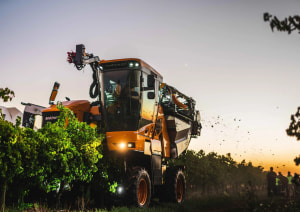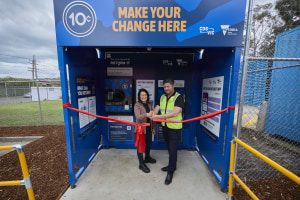Australia’s food and grocery manufacturing industry has grown four per cent to almost $133 billion, the Australian Food & Grocery Council’s (AFGC) annual State of the Industry report reveals. Looking at data from 2019/20, AFGC's analysis of the sector’s performance provides a snapshot of the industry in the early stages of Covid-19-related disruption.
The growth was driven by a rise in the value of exports, which were up almost eight per cent on the previous financial year to $41.3 billion, AFGC CEO Tanya Barden said.

State of industry 2019-2020
“It shows the importance of export markets to local manufacturers. In a period affected by drought, bushfires and the onset of Covid-19, Australian food and grocery manufacturers demonstrated their resilience and resourcefulness by growing the value of this vitally important industry, particularly in overseas markets,” Barden said.
Domestically, Covid-19 lockdowns caused an increase in consumption through supermarket channels, although this was dampened by a drop in sales through food service channels such as restaurants and convenience stores.
“While the lift in sales is a positive for the industry, it hides the fact that businesses have incurred increased costs due to several factors including the Covid-19 related expenses of maintaining safe workplaces, operational changes to meet increased demand and address supply chain disruptions, a tripling of sea freight charges and increases in commodity and packaging prices,” Barden said.
“These cost increases follow a decade where costs have grown at double the rate of wholesale prices and there is a need for the industry to recoup costs going forward to maintain viable operations.”
The report showed a modest 5.2 per cent increase in capital investment in the period, well below levels needed to reach the vision of doubling the industry by 2030, as set out in the federal government’s Modern Manufacturing Strategy Food and Beverage Roadmap and AFGC’s report, Sustaining Australia: Food and Grocery Manufacturing 2030.
Commenting on the report's findings, Mark Dingley, chairman of the Australian Packaging & Processing Machinery Association (APPMA), said, “The resilience and adaptability of the packaging and processing industry to meet to the challenges of the past two years to safely provide essential food, beverages and services to all Australians is a credit to all stakeholders.
“Continued investment and development of the industry in line with the Modern Manufacturing Strategy – Food and Beverage Roadmap will play a major role in the post-Covid economic recovery and Australia’s future prosperity,” Dingley said.
Snapshot of key findings
- 7.9 per cent increase in the value of exports from the food and grocery manufacturing industry to $41.3 billion
- 12.1 per cent increase in the value of imports to $39.9 billion
- slight increase in food and grocery’s share of total Australian manufacturing, up 0.4 per cent to 32 per cent
- slight decline (0.2 per cent) in total industry employment to 270,801 people
Growth in sales to China was a key driver of exports, with a significant increase in meat exports and a notable 18 per cent increase in human pharmaceutical products, lifting the value of that high-value-added export to $6.6 billion.
Barden said increasing exports of high-value products is a key goal for the sector.
“The State of the Industry data adds to in-depth analysis of the industry done by the AFGC and provides a clear picture of the challenges and opportunities for Australia’s food and grocery manufacturers,” she said.
Reversing a decade-long trend of stagnant investment in the industry is critical to long-term success, Barden said, as is ensuring near-term stability with a more rational approach by retailers to cost pressures than had occurred over the last decade.
“We have said that, with the right policy settings to encourage investment, Australian food and grocery manufacturing can double in value to $250 billion by 2030,” she said.
“Important decisions to encourage investment need to be made now so that the industry can secure a strong future and help the Australian economy rebound from the challenges of the Covid-19 pandemic.”






